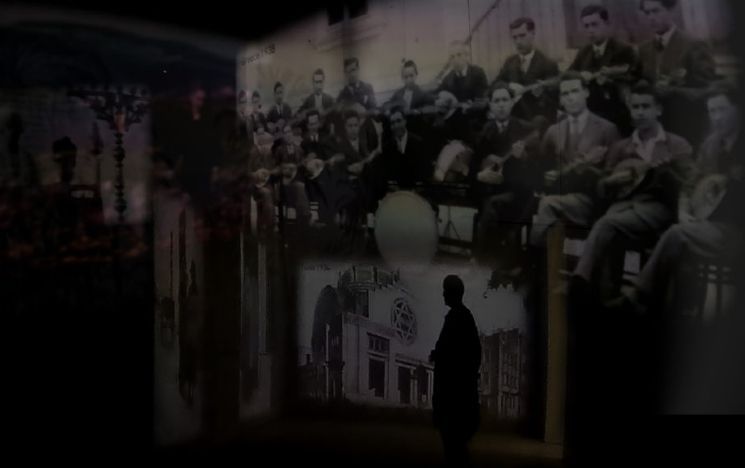Digital Holocaust memory and education
Our research into digital Holocaust memory and education is currently focused on two projects led by Dr Victoria Grace Walden and Dr Kate Marrison.
 Images of pre-war Jewish life projected onto the inside walls of Block 27 at Auschwitz I.
Images of pre-war Jewish life projected onto the inside walls of Block 27 at Auschwitz I.
A digital collage created by Dr Victoria Grace Walden.
Digital technology brings great opportunities to Holocaust memory and education, but also particular challenges as we move from an era dominated by face-to-face survivor testimony to what James Young (2000) has defined as an age characterised by mediated memory.
As digital culture evolves as increasingly participatory networks, how do museums and memory institutions, educators and learners find their place in this ever-expanding space?
Our research into Digital Holocaust Memory and Education has the following aims:
- To map the digital Holocaust memoryscape, including institutional and amateur projects
- To interrogate the ‘newness’ of digital Holocaust memory and understand it in relation to media, museum and memory histories as well as within contemporary digital logics and cultures
- To establish a network of heritage and archive professionals, academics, amateur and professional media producers, and digital audiences/users to explore potential digital futures for Holocaust memory together.
- To think critically about the notion of ‘the user’ as well as ‘the platform’ with regards to agency and interactivity in, by and through digital experiences
- To explore ways in which digital technologies may enhance, expand and transform pedagogies around teaching and learning about the Holocaust.
Learn more about our current projects in this area on our project page and the Digital Holocaust Memory website.